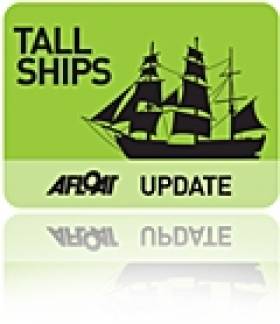Displaying items by tag: Waterford Tall Ship Races Festival
Lord Nelson Heads for Waterford
As the Tall Ship STS Lord Nelson nears Carnsore Point off Wexford this evening the barque will be one of the many vessels participating in the Waterford Talls Ships Races Festival, writes Jehan Ashmore.
Joining Lord Nelson are three other UK entrants, they are the Jean de la Lune, Pelican of London and Royalist now celebrating her 40th anniversary. Together these tallships belong to the 'A' class vessels, the largest of the tallships. The impressive array of A class vessels includes four ships alone from The Netherlands with the Astrid, Eendracht, Europa and Wylde Swan, a schooner built in 1920.
From Norway is the fully rigged tallship Christian Radich and Sorlandet. The Poles are coming with their Pogoria. Neighbouring Russia are sending their impressive 108m long Mir which has 26 sails and has a 200-strong crew though the 1987 built vessel can be sailed with just 30. The final A class entrant is from outside Europe, the Columbian 1,300 tonnes Gloria, a three-master of over 60 metres long.
In addition to this exciting line-up are the 'B' and 'C' class which in total brings 45 tallships of all shapes and sizes to the quays of the River Suir. The crystal city will be host to over 1,000 trainess and over 400 professional crew who will take part in the colourful 'Crew Parade' held on Friday. For a full list of tallships and accompanying photos go to www.waterfordtallshipsrace.ie/the-race/the-tall-ships/
The spectacle of the festival will culminate in the early hours of Sunday when the fleet departs the city and heads downriver with a 'Parade of Sail' in the estuary of Waterford Harbour. As the tallships pass offshore of Dunmore East, this will mark the start of the first race-leg to Greenock.
The famous race is organised by Sail Training International (STI) a charity established to harness sail training to develop and educate young people, regardless of nationality, culture, religion, gender or social background.
The STI can trace its roots with the creation of the Sail Training International Race Committee which organised the first race of sail training tall ships in 1956. Their website is www.sailtraininginternational.org/





























































